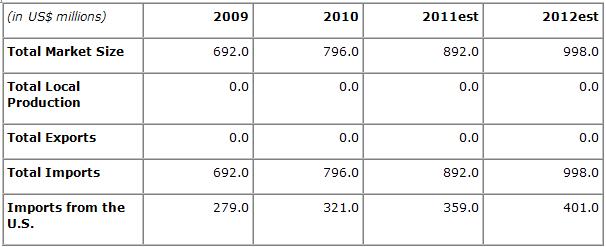Network Policy
Telecommunications Regulation: Stage 4
Panama has experienced many changes in telecommunication industry in past
fifteen years. The telecommunication
market was privatized in 1996 and de-regulated in 2003. The telecommunication
infrastructure has greatly improved as a result of investments made by Cable and
Wireless after privatization.
As a result of the de-regulation, new choices in telecommunication service
providers for national and international calls were made available.
Competitive rates offered by the new
providers have benefited both individuals and businesses. The National Public Services
Authority ("Autoridad Nacional de los Servicios Públicos" or "ASEP”), an
autonomous state agency, was setup to manage Panama telecommunication industry.
Key Dateline:
1996: The Panama government
began the process of privatization of the National Institute of
Telecommunications (INTEL).
1997: Prior to privatization,
INTEL was the sole provider of telecommunication services. In 1997, Cable and Wireless bought
49% of INTEL telecommunication services. The government owned the remaining 51%.
2003: The telecommunications
market was de-regulated and other companies were allowed to enter the market.
Cable and Wireless monopoly on national and international services ended with
emergence of new companies’ such as Telecarrier Inc., Clarocom, Advanced
Communications, Galaxy Communications Corp., System One World, Tricom, and Voip
Comunicaciones de Panama.
Panama – key telecom parameters – 2010
- 2011
|
Category
|
2010
|
2011
|
|
Fixed-line service
|
|
Total number of subscribers1
|
553,000
|
575,000
|
|
Teledensity1
|
15.4%
|
15.8%
|
|
Internet
|
|
Internet users (million)
|
1.50
|
1.65
|
|
Internet users penetration
|
41.8%
|
45.3%
|
|
Broadband
|
|
Total number of subscribers
|
276,000
|
320,000
|
|
Penetration rate
|
7.7%
|
8.8%
|
|
Mobile telephony subscribers
|
|
Total number of subscribers (million)
|
6.50
|
6.80
|
|
Mobile penetration rate
|
185.4%
|
187.2
|
Panama’s fixed-line
teledensity is well below the average, by about 3 percentage points, for Latin America and the Caribbean
countries.
Competition is also limited in
the broadband sector, where Cable & Wireless companies are not willing to
unbundle its local network and has secured a virtual monopoly in the delivery of
ADSL access. The only competition is across technologies such as from cable
modem and WiMAX services.
The mobile sector has been
flourishing with penetration well above the 100% milestone and about 30% higher
than the regional average. The arrival of new mobile providers around the start
of 2009 has resulted in high levels of promotional activity and steep price
reductions in mobile plans.
Internet penetration is
expected to grow further in 2012 as a result of Panama government’s ‘Internet
for All’ project. In 2010, Panama
became one of the first countries in the world to offer free wireless internet
access nationwide, reaching about 80% of the population. The National Internet
project does not compete with private Internet providers, because its aim is
digital inclusion and not the provision of high-speed access.
ICT Trade Policy: Stage 4
Panama’s government has worked to
liberalize the telecommunication, in accordance with the Information Technology
Agreement (ITA), which has given great opportunities to foreign companies,
especially the US, to invest in
telecommunication sectors. Panama’s
tariffs are already relatively low – an average of 7% for industrial goods and
around 15% for agricultural products.
“Panama maintains an essentially liberal trade
and investment regime, characterized by relatively low tariffs and few
non-tariff barriers, which is in consonance with the vital role that trade plays
in Panama’s economy” according to a WTO Secretariat report on the trade policies
and practices of Panama.
In October 2011, USA passed a
Free Trade Agreement with Panama and as a result of this agreement; Tariffs will
drop to 0% for U.S. Exports to Panama.
Market Estimates -
Telecommunications
Equipment - A Top U.S. Export Prospect for Panama

|